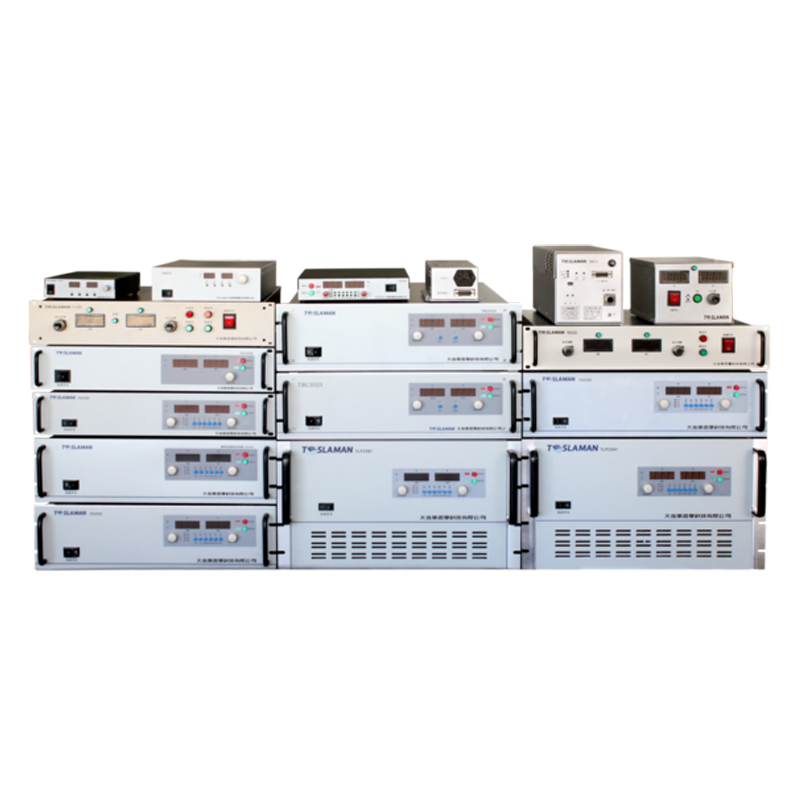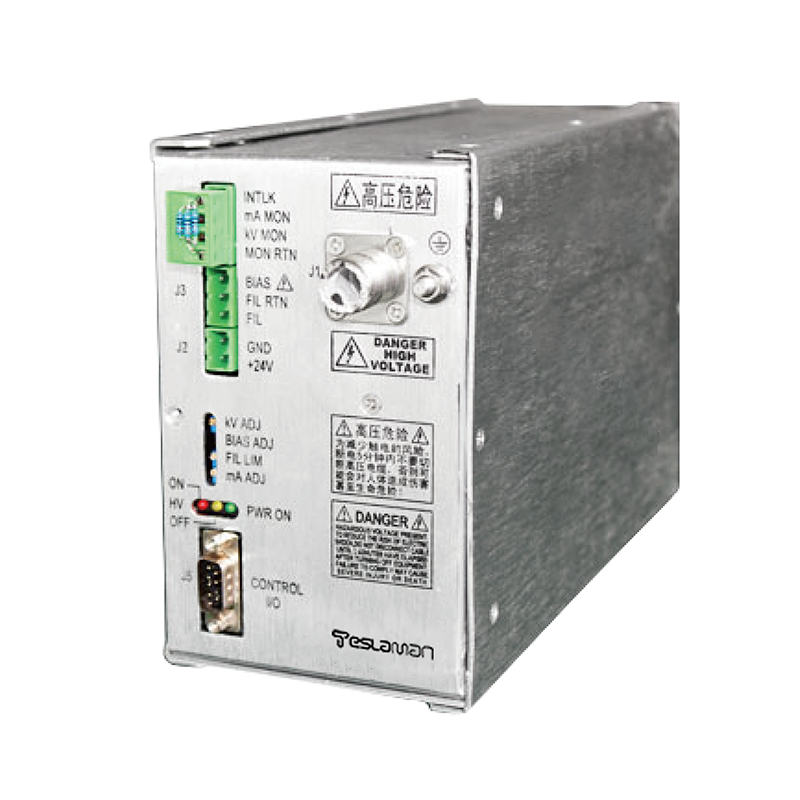Design Challenges and Solutions of High-Voltage Power Supplies for Electrospinning
Abstract: This paper delves into the design challenges faced by high-voltage power supplies for electrospinning from a professional perspective and proposes corresponding solutions. Electrospinning technology holds significant importance in the field of nanofiber preparation, and the high-voltage power supply, as a crucial piece of equipment, directly impacts the stability of the electrospinning process and the quality of the fibers. By analyzing various challenges such as voltage stability, current limitation, and safety, effective coping strategies are elaborated, aiming to provide theoretical basis and practical guidance for the optimized design of high-voltage power supplies for electrospinning.
I. Introduction
Electrospinning is a technique that utilizes a high-voltage electric field to form nanofibers from polymer solutions or melts. In this process, the high-voltage power supply plays a central role in providing a powerful electric field force. With the continuous development of nanomaterials science, the requirements for the quality and output of nanofibers produced by electrospinning are increasing day by day, which imposes higher design requirements on the high-voltage power supplies for electrospinning.
II. Design Challenges of High-Voltage Power Supplies for Electrospinning
(A) Challenges in Voltage Stability
Electrospinning requires that the high-voltage power supply can output a stable high voltage. During the electrospinning process, minor fluctuations in voltage can lead to changes in the electric field strength, thereby affecting the formation of jets and the uniformity of fiber diameters. For example, when the voltage is unstable, the jets formed by the polymer solution under the action of the electric field may vibrate or be interrupted, ultimately resulting in uneven fiber thickness or even defects. In addition, changes in environmental factors such as temperature and humidity can also interfere with the output voltage of the power supply, increasing the difficulty of maintaining voltage stability.
(B) Challenges in Current Limitation
During the electrospinning process, precise control of current is necessary. Excessively high current may cause overheating of the solution, leading to rapid evaporation of the solvent, degradation of the polymer, and other issues, seriously affecting the quality of the fibers. However, due to changes in the load characteristics during the electrospinning process, such as changes in the solution concentration and the distance between the nozzle and the receiving device, current fluctuations will occur. How to accurately limit the current and maintain its stability under different load conditions is a major challenge in the design of high-voltage power supplies.
(C) Challenges in Safety
High-voltage power supplies involve high-voltage output and pose significant safety risks. On the one hand, high voltage can cause electric shock injuries to operators; on the other hand, if an electrical fault occurs inside the high-voltage power supply, such as a short circuit, it may lead to serious accidents such as fires or explosions. Therefore, effective electrical isolation, overvoltage and overcurrent protection, and other safety measures need to be taken during the design process to ensure the safe operation of the equipment under various working conditions.
(D) Challenges in Miniaturization and Portability
With the increasing application requirements of electrospinning technology in some special fields such as on-site testing and portable nanofiber preparation devices, requirements for the miniaturization and portability of high-voltage power supplies have been raised. To achieve high-voltage output, stable performance, and necessary safety protection functions within a limited space, optimization and innovation in multiple aspects such as circuit design and component selection are required, which is a considerable challenge for designers.
III. Solutions for High-Voltage Power Supplies for Electrospinning
(A) Solutions for Voltage Stability
To improve voltage stability, a high-precision voltage feedback control system can be adopted. By real-time monitoring of the output voltage and comparing it with the set value, the feedback signal is used to adjust the power conversion circuit inside the power supply, so that the output voltage is always maintained within a stable range. Meanwhile, to deal with the interference of environmental factors, temperature compensation circuits and shielding techniques can be used to reduce the impact of temperature, humidity, etc. on the voltage output. For example, a temperature sensor can be installed inside the power supply, and when the temperature changes, the circuit parameters are automatically adjusted to maintain voltage stability.
(B) Solutions for Current Limitation
To address the issue of current control, an intelligent current limitation circuit can be designed. This circuit can automatically adjust the upper limit of current output according to changes in the load. A current sensor is used to monitor the current value in real time. When the current approaches or exceeds the set safety threshold, by controlling the conduction degree of power devices, the output voltage or current is reduced, thereby preventing the adverse effects of excessive current on the electrospinning process. In addition, a constant current source technology can be adopted to ensure the stability of the output current under different load conditions.
(C) Solutions for Safety
In terms of safety, first of all, good electrical isolation measures should be adopted. For example, isolation transformers, optocouplers, and other components are used between the high-voltage output end and the low-voltage control end to isolate the high-voltage part from the low-voltage part that can be accessed by operators, preventing electric shock accidents. Meanwhile, a complete overvoltage and overcurrent protection circuit should be installed. When abnormal voltages or currents are detected, the power supply output is quickly cut off and an alarm signal is issued. For example, an overvoltage protection relay can be set up. When the voltage exceeds a certain percentage of the rated value, the relay operates and disconnects the circuit connection. In addition, the housing of the high-voltage power supply should be made of insulating, fireproof, and explosion-proof materials to further improve the safety of the equipment.
(D) Solutions for Miniaturization and Portability
To achieve miniaturization and portability, an integrated circuit design concept can be adopted. Multiple functional modules such as power conversion modules, control modules, and protection modules are integrated on one or several small circuit boards, reducing the area of the circuit boards and the number of components. Small-sized and high-performance electronic components such as surface mount components and miniature transformers are selected. Meanwhile, the heat dissipation structure of the power supply is optimized. High-efficiency heat sinks or fans are used to reduce the volume while ensuring the heat dissipation effect, so as to facilitate carrying and application in different scenarios.
IV. Conclusion
The design of high-voltage power supplies for electrospinning faces multiple challenges such as voltage stability, current limitation, safety, and miniaturization and portability. By adopting solutions such as high-precision voltage feedback control systems, intelligent current limitation circuits, complete safety protection measures, and integrated circuit design, these challenges can be effectively addressed, improving the performance and reliability of high-voltage power supplies for electrospinning. This will contribute to promoting the further development of electrospinning technology in the field of nanofiber preparation, meeting the ever-growing scientific research and industrial production requirements, and laying a solid foundation for the widespread application of nanomaterials. In future research and design, new technologies and methods need to be continuously explored to continuously optimize the design of high-voltage power supplies for electrospinning to adapt to more complex and diverse application scenarios.




















